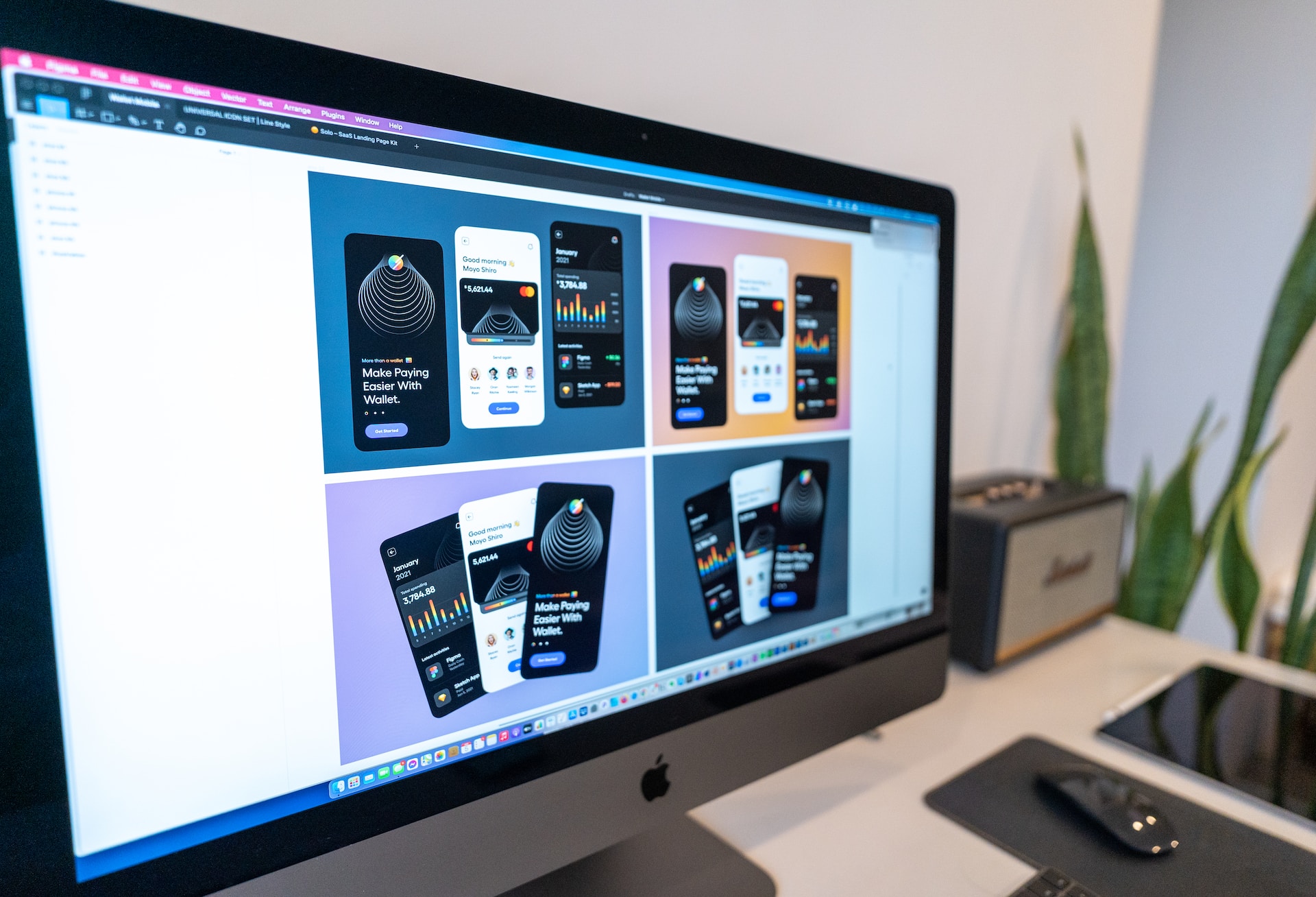Have you ever enjoyed any product so thoroughly that you bought more and even told people about it? I have.
Likewise, have you bought a product that held so much promise yet didn’t meet your expectations? I also have.
Even though your encounters with both products differ, they have a common denominator – experience. One gave you a great experience; the other gave you a poor one.
This illustration is a basic example of how user experience affects buying decisions. It is clear that you won’t be buying the product that gave you a bad experience and you’ll continue buying the one that gave you a great experience.
Now that you know how user experience affects business success, let’s get to how you can leverage it for growth.
What is UX design
User experience (UX) design is a design process totally dedicated to offering users the best possible experience. This process is dedicated to creating and improving quality user interaction with the product and brand.
To achieve this, UX designers deploy a combination of user research, market research, strategy, product development and design. The result is a usable, enjoyable and accessible product.
What are the core principles of UX design (UXD)

User experience isn’t just a fancy coinage by designers; it is built on die-hard principles. And a grasp of UX design key principles is required if you want to apply them to business. When these principles are applied, it resolves user pain points, increases usability and drives conversion. Here are some core UX design (UXD) principles.
User-centricity
User-centricity is the most important principle of UX design and this is obvious in the name. Everything you do is about the user. Every action, principle and strategy must be geared toward creating a fabulous experience for the user. Without this tenet, user experience design will not even exist. In UX design, the user is at the front, back and middle. Always keep this in mind.
Usability

Usability is another vital rule guiding UX design. To create a great experience for your user, they must be able to use your product easily. It’s the first step. Before they can even tell whether the product is enjoyable, they must first be able to use it. If your users are having difficulty using your product, then you’re violating one of the core principles of UX.
Simplicity
Your job is to make life easier for your users, not harder. Any solution you’re providing that doesn’t simplify your customers’ lives will drive them away. Therefore, your product must be presented in the simplest of ways. When your design is simple, it increases easy interaction and reduces cognitive efforts for your users.
So, next time you’re designing any product, ensure you reduce visual clutter, use adequate whitespaces, introduce fewer elements and emphasize the important points and call-to-actions.
Hierarchy
Humans are wired to consume information hierarchically. This keeps things in order and ensures flow. When information is not arranged hierarchically, it leads to confusion. That’s why you need to make sure hierarchy plays a huge role in your design. It affects how your user navigates your product and can determine whether the process is easy or complicated.
Context
Nothing exists in a vacuum. Certainly not your product. You must consider context when designing a product that will give your users a great experience. Think about who your users are, how and when they will use your product and factors that can affect their experience. Doing this will equip you to build a suitable and acceptable product.
Accessibility

Accessibility has to do with inclusion and it’s a key user experience principle. It includes understanding people’s different environments and circumstances and how these factors might affect their experience with your product.
Accessibility is also about taking the pain points of people with disabilities into consideration.
It involves making your product usable for and accessible to as many people as possible. When designing for accessibility, consider readability, structure, color contrast, etc.
How to improve your UX design skills
Finding ways to improve your UX design skills is one of the first steps to leveraging user experience design for business growth. Fortunately, UX design skills are easy to learn. Find below some tips on how you can improve your user experience design skills.
- Grasp the core principles of UX design
- Study other designers
- Take some courses
- Share your work
- Network
- Practice
6 ways UX design improves your business
Although user experience design is about creating enjoyable experiences for users, it’s not only the user that benefits. You also benefit. It’s called enlightened self-interest. You’re doing so much for the user, but in the real sense, you’re actually doing them for yourself. If you’re in doubt, check out the statistics. For every dollar you invest in UX, you get 100 in return. How’s that for ROI?
Here are some perks UX design brings to your business.
1. Customer satisfaction

Your customers are your users. They download your app, use your website and buy whatever product or service you’re selling. When you incorporate UXD principles into your business, you’re rewarded with customer satisfaction. Customers find your product enjoyable and even recommend you to others.
2. Reduced cost of production
UXD focuses extensively on user research, which ensures that you take the user’s needs, pain points, feelings and ambitions into consideration when building the product. Also, user testing is an essential aspect of UX design. These concepts let you get feedback on your prototype and keep improving it until it becomes satisfactory to the target audience.
Without these vital precautions that are put in place as a result of user experience design, you will expend resources on building products that are not desirable, acceptable and satisfactory. Then, you’ll have to start again from scratch. But with user research and testing, you build exactly what your customers want and save money in the process.
3. Increased conversion
The aim of every business is for their marketing efforts to lead to conversion. However, it doesn’t matter how effective your marketing campaigns are, or how perfect your administrative efficiency is, without UXD principles, the outcome will be disappointing. The reason is simple. When prospects get to your website and they don’t have a satisfactory experience, they won’t be converted.
Likewise, when customers buy your product and they’re not satisfied, they’ll stop patronizing you. On the other hand, when users find your product (app, website, software) enjoyable, they keep coming and buying from you.
4. Competitive edge

Not every business employs UX design or even knows about it. Therefore, integrating it into your business processes gives you a competitive advantage and makes you become a better business owner. Customers will naturally move towards a product that is usable, simple, enjoyable and accessible. Consistent practice of these UX principles will drive conversions, grow your business and set you apart from your competitors.
5. Better products
There’s no better way to build improved products than by tailoring them to your customers’ needs. Companies tend to design products they feel customers need, leading to assumptions. This is because they’re not the user, and no matter how much empathy they have for the user, they can never know exactly how the user feels and thinks.
However, user experience design erases these assumptions by thoroughly researching the user. The result from the research is what is used to build the product. That’s not all; when the prototype is made, the user will first test whether it is satisfactory or not. If it’s not, the designers go back to the drawing board and improve on their efforts. This generally results in better products.
6. Enhanced brand perception
When design resonates with the user, it leads to increased brand perception. Now, this resonation doesn’t just happen; it is a result of in-depth research, strategy and practices of UX design. A product built with the user in mind from conception to launch will surely create a special connection with the user. This connection will then draw customers to your brand, increasing your brand perception.
Think UX design, think business success
It is safe to say that UX design and business success are like Siamese twins; one doesn’t move without the other. There’s no way you’ll put user experience design principles to use and your business will not grow. Likewise, any business succeeding is definitely making the user its priority.
UX design practice allows you to align your product to your customers’ needs, leading to business growth. When your business is user-centric, you reap benefits like customer satisfaction, reduced cost of production, increased conversion, competitive advantage, improved products and enhanced brand perception.
There’s no better time to take the bull by the horns and harness the potential UX design holds for your business. All the best!
